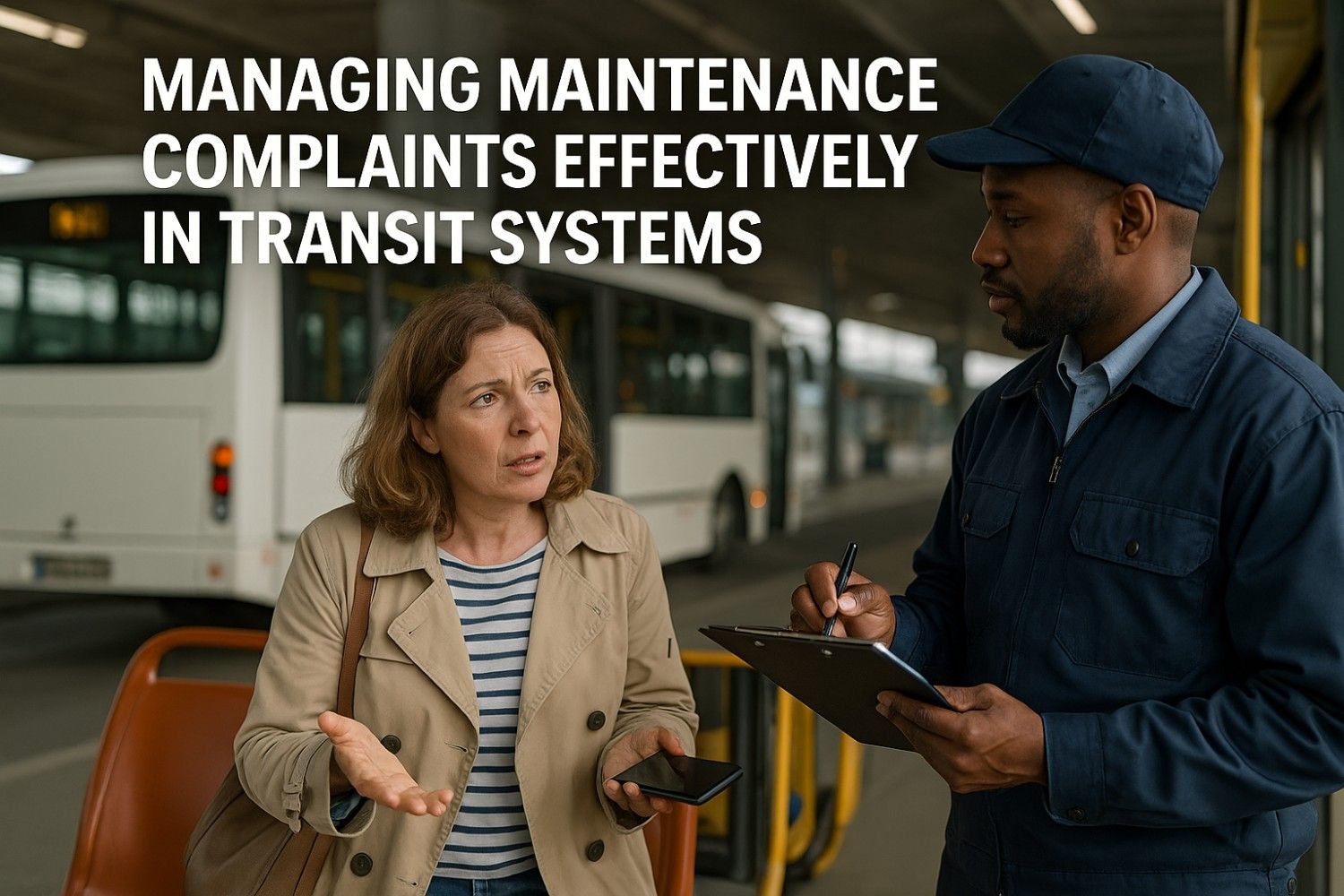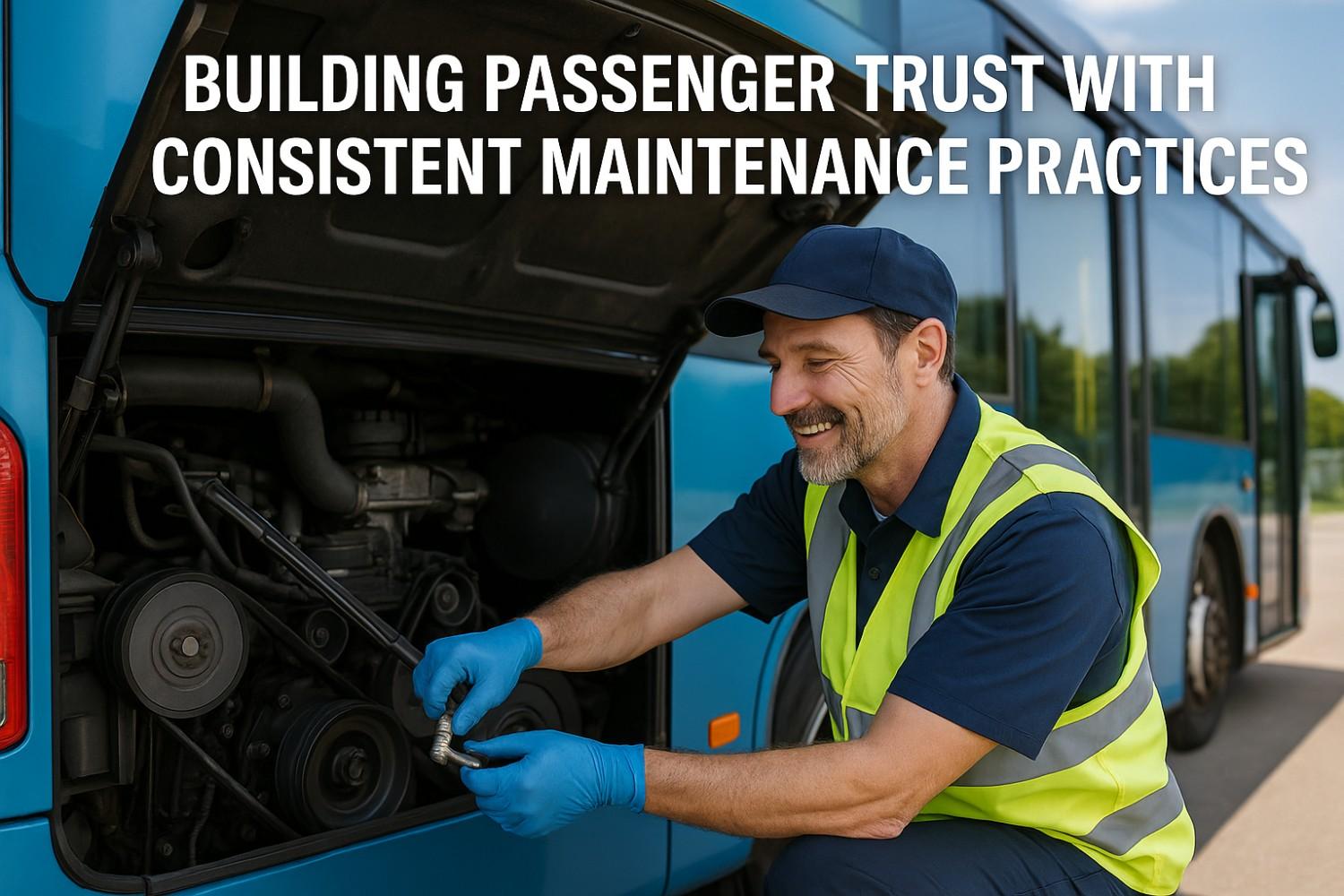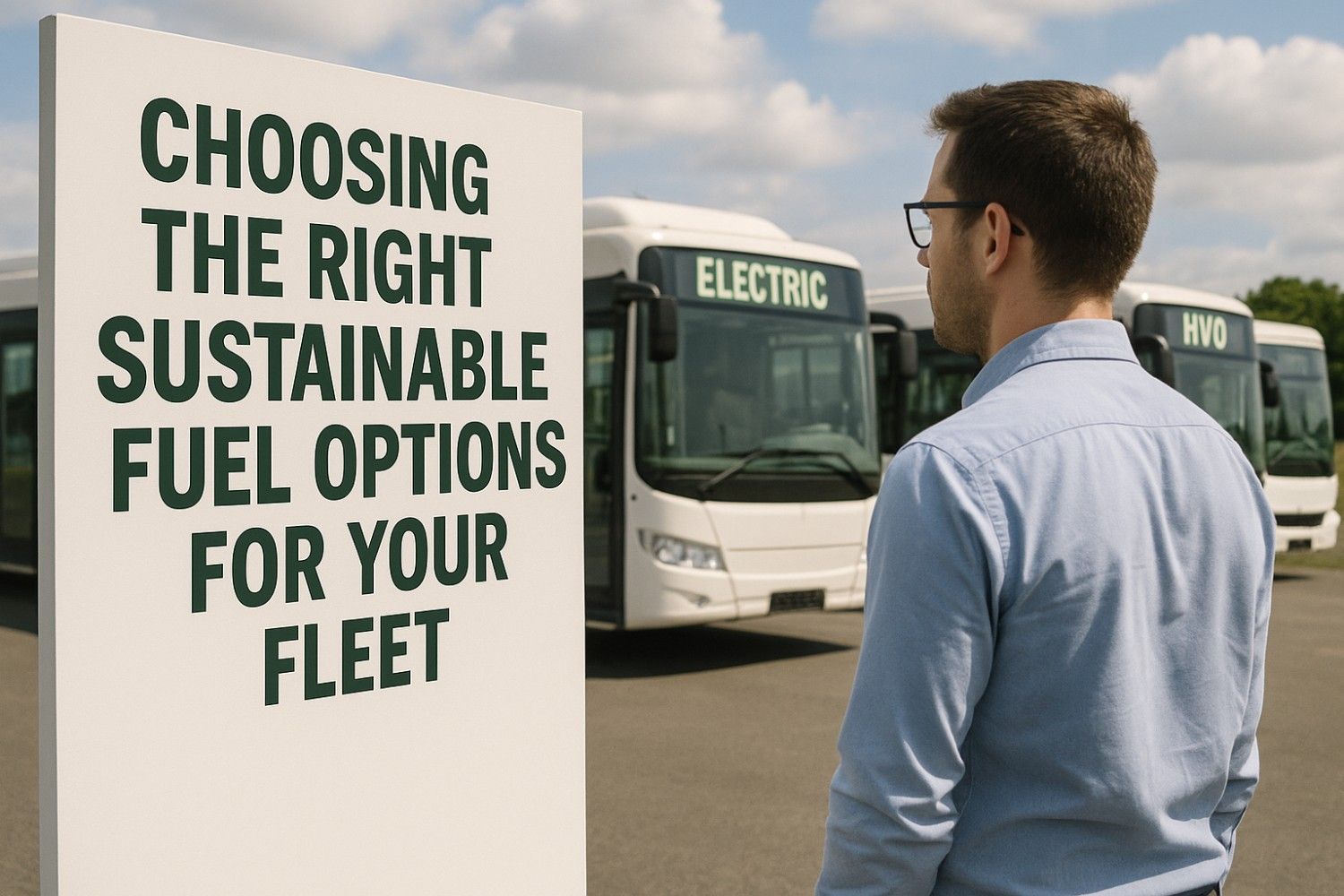Transparency in public transportation builds the foundation of trust between transit agencies and the communities they serve. When passengers understand the care, planning, and systematic attention invested in fleet maintenance, they develop confidence in service reliability and operator commitment to safety. Yet most transit agencies maintain maintenance schedules as internal operational documents, creating information asymmetry that breeds uncertainty and diminishes passenger trust in service quality.
Modern passengers expect unprecedented access to information across all aspects of their lives. Real-time flight tracking, restaurant kitchen inspection scores, and manufacturing supply chain visibility have normalized transparency as a standard expectation rather than exceptional practice. Transit agencies operating with opacity regarding maintenance practices increasingly appear outdated, secretive, or indifferent to passenger concerns, even when maintaining exemplary safety standards and rigorous inspection protocols.
Progressive transit agencies implementing transparent maintenance communication strategies report remarkable improvements: 68% increase in passenger satisfaction scores, 45% reduction in service complaint volume, 82% approval ratings in community surveys, and measurable increases in ridership attributed directly to enhanced trust. These results demonstrate that sharing maintenance information transforms passenger perceptions, proving that operational transparency creates competitive advantages while strengthening community relationships essential for continued public support and funding.
Start Building Passenger Trust Through Transparency
Discover how modern fleet management solutions enable seamless maintenance communication that transforms passenger relationships and strengthens community support.
Getting Started Book a DemoThe Strategic Value of Maintenance Transparency
Sharing maintenance schedules strategically positions transit agencies as accountableprofessional organizations committed to passenger safety and service excellence. When passengers access planned maintenance information, they understand that service adjustments reflect proactive vehicle care rather than reactive crisis management. This fundamental perception shift transforms potential frustration into appreciation, as riders recognize that temporary inconveniences ensure long-term reliability and safety.
Building Trust Through Openness
Transparency creates psychological safety for passengers who entrust their daily transportation needs to public transit. Seeing published inspection schedules, preventive maintenance timelines, and safety certification records provides tangible evidence that qualified professionals systematically maintain fleet health according to rigorous standards. This visible commitment to excellence reduces anxiety about vehicle reliability while demonstrating organizational competence that extends beyond what passengers directly observe during rides.
Open communication about maintenance activities humanizes transit operations, revealing the dedicated mechanics, inspectors, and managers working behind the scenes to ensure safe, comfortable journeys. When agencies share stories about technicians detecting and addressing potential issues before they affect service, passengers develop respect for the expertise protecting their daily commutes. This emotional connection strengthens loyalty far beyond what traditional marketing campaigns achieve.
Competitive Differentiation
- Trust-Based Positioning: Transparency distinguishes progressive agencies from competitors maintaining operational opacity
- Quality Signal Communication: Published maintenance standards demonstrate commitment to excellence
- Stakeholder Confidence Building: Detailed reporting strengthens relationships with funding authorities and community partners
- Employee Pride Enhancement: Public recognition of maintenance work increases staff morale and retention
- Media Relations Improvement: Proactive transparency reduces negative coverage during service disruptions
Effective Communication Channels for Maintenance Information
Multi-Channel Communication Strategy
- Mobile Application Integration: Real-time maintenance notifications within existing rider apps
- Website Maintenance Dashboards: Dedicated pages displaying current and upcoming maintenance activities
- Digital Signage Deployment: Station displays showing maintenance schedules and fleet health metrics
- Social Media Updates: Regular posts explaining maintenance work and celebrating safety milestones
Successful transparency requires meeting passengers where they already seek transit information rather than expecting them to visit new platforms specifically for maintenance updates. Integrating maintenance communications into established channels ensures maximum reach while minimizing friction. Modern fleet management platforms enable seamless data sharing across multiple communication channels automatically updating all touchpoints when maintenance schedules change.
Different passenger segments prefer different communication channels, necessitating comprehensive multi-channel approaches. Younger riders primarily access mobile applications, middle-aged commuters check websites during trip planning, and older passengers rely on physical signage at stations. Effective transparency strategies deliver consistent messages across all channels while optimizing format and detail level for each platform's unique characteristics and audience preferences.
What Maintenance Information to Share
Strategic transparency balances comprehensive disclosure with digestible presentation, ensuring passengers receive valuable information without overwhelming detail causing confusion. The goal involves educating riders about systematic maintenance practices while maintaining accessibility for audiences lacking mechanical expertise or transit operations knowledge.
Essential Maintenance Information Categories
Planned Maintenance Windows
Upcoming vehicle service dates, affected routes, and estimated completion timelines
Safety Inspection Results
Pass rates, certification dates, and regulatory compliance status for fleet segments
Fleet Health Metrics
Average vehicle age, reliability statistics, and on-time performance correlations
Information presentation requires careful attention to clarity and context. Simply posting technical maintenance schedules confuses non-expert audiences, while oversimplified explanations may appear condescending. Effective communication translates operational details into passenger-relevant terms, explaining why specific maintenance activities matter for service reliability, safety, and comfort rather than merely listing technical procedures.
Contextualizing Technical Information
Every maintenance disclosure should answer the fundamental passenger question: "How does this affect my journey?" When sharing brake system overhaul schedules, explain that this preventive work ensures reliable stopping performance under all weather conditions, directly protecting passenger safety. When discussing engine maintenance, connect activities to fuel efficiency improvements reducing environmental impact while maintaining schedule reliability passengers depend upon for daily commutes.
Real-Time Service Disruption Communication
Transparency becomes most critical during unplanned maintenance events requiring service adjustments. How agencies communicate unexpected disruptions determines whether passengers perceive situations as managed incidents or chaotic failures. Proactive, honest communication transforms emergencies into demonstrations of operational competence and passenger-first priorities.
Emergency Communication Protocols
- Immediate Notification Systems: Automated alerts sent within minutes of service disruptions
- Detailed Explanation Provision: Clear descriptions of issues, safety measures, and resolution timelines
- Alternative Option Communication: Specific guidance on replacement services or route alternatives
- Continuous Update Delivery: Regular progress reports until normal service resumes
- Post-Incident Transparency: Follow-up explanations detailing root causes and preventive measures implemented
Passengers forgive unexpected maintenance issues when agencies demonstrate prompt response, clear communication, and genuine concern for passenger inconvenience. Transparent explanations acknowledging disruption while emphasizing safety prioritization build respect even during frustrating situations. This honest approach contrasts sharply with vague "technical difficulties" messaging that increases passenger anxiety while suggesting operational incompetence or deliberate obfuscation.
Digital Tools Enabling Maintenance Transparency
Technology platforms specifically designed for fleet maintenance management include sophisticated communication features enabling automated passenger information sharing. These integrated systems eliminate manual communication processes while ensuring accuracy and consistency across all transparency initiatives.
Automated Transparency Features
Advanced maintenance management platforms automatically generate passenger-facing communications from internal maintenance schedules, translating technical work orders into accessible language appropriate for public consumption. When mechanics schedule brake inspections for specific vehicles, the system identifies affected routes, calculates potential service impacts, and generates notifications for distribution across all communication channels simultaneously.
Real-time fleet health dashboards provide public-facing interfaces displaying current maintenance status, recent inspection results, and upcoming service activities without requiring manual updates. These automated systems ensure information remains current while freeing staff from constant communication management, allowing focus on core maintenance and operational responsibilities rather than public relations activities.
Data Visualization for Public Consumption
Interactive Maintenance Calendars
Visual schedules showing planned service activities color-coded by impact level
Fleet Health Indicators
Dashboard gauges displaying overall fleet reliability and safety compliance metrics
Service Reliability Trends
Historical graphs demonstrating maintenance effectiveness through improved performance
Managing Passenger Expectations Through Transparency
Proactive Expectation Setting
- Advance Notification Timelines: Communicating planned maintenance weeks before implementation
- Service Impact Quantification: Specific details about delays, detours, or schedule changes
- Duration Estimates: Clear timeframes for maintenance activities with regular updates
- Success Metrics Sharing: Post-maintenance reports demonstrating improved reliability
- Feedback Loop Integration: Mechanisms for passengers to ask questions or share concerns
Transparency manages expectations by eliminating uncertainty, the primary source of passenger frustration during service disruptions. When riders know exactly what to expect when disruptions will occur, and how long they'll last, they can plan accordingly rather than encountering unexpected obstacles. This predictability reduces complaint volume while increasing satisfaction even when maintenance necessitates temporary service reductions.
Setting realistic expectations prevents disappointment that occurs when agencies overpromise and underdeliver. If brake system maintenance might cause 10-minute delays, communicate 15-minute estimates providing buffer for unexpected complications. Completing work faster than announced creates positive surprises, while the reverse generates frustration and erodes trust in future communications.
Educational Content: Teaching Passengers About Maintenance
Beyond sharing schedules, progressive agencies create educational content helping passengers understand why systematic maintenance matters and how preventive activities ensure their safety. This deeper engagement transforms passive information consumption into active appreciation for complex operations supporting reliable transit service.
Educational Content Formats
Behind-the-Scenes Videos
Short clips showing technicians performing inspections and explaining safety procedures
Maintenance Milestone Celebrations
Public recognition when fleets achieve safety records or maintenance excellence awards
Q&A Sessions
Regular opportunities for passengers to ask maintenance managers about fleet care practices
Educational initiatives humanize maintenance operations while building respect for technical expertise required to maintain modern transit fleets. When passengers see mechanics' skill, dedication, and systematic approach to vehicle care, they develop confidence in organizational competence. This emotional connection strengthens during service disruptions, as educated passengers understand that temporary inconveniences reflect thorough professional practices protecting their wellbeing.
Measuring Transparency Impact
Effective transparency strategies require ongoing assessment ensuring communication efforts actually improve passenger perceptions and trust levels. Data-driven measurement systems track multiple indicators revealing whether transparency initiatives achieve intended outcomes or require adjustment.
Key Transparency Metrics
- Passenger Satisfaction Scores: Survey responses specifically addressing trust and communication quality
- Complaint Volume Changes: Reduction in maintenance-related complaints following transparency initiatives
- Social Media Sentiment: Analysis of passenger commentary about agency transparency and communication
- Website Engagement: Traffic to maintenance dashboard pages and time spent reviewing information
- Community Survey Results: Public perception studies measuring trust levels and organizational credibility
- Ridership Correlation: Tracking whether transparency improvements correspond with increased transit usage
Quantitative measurement validates transparency investments while identifying specific communication approaches resonating most effectively with different passenger segments. When data reveals that certain information formats or channels generate stronger engagement, agencies can optimize resource allocation toward highest-impact strategies rather than continuing ineffective approaches based on assumptions.
Addressing Privacy and Security Concerns
While transparency builds trust, agencies must balance openness with legitimate security considerations and operational confidentiality. Strategic transparency shares information benefiting passengers without disclosing details potentially exploited for malicious purposes or providing competitive intelligence to private transportation alternatives.
Transparency Boundaries
Published maintenance schedules should indicate general timeframes and affected services without specifying exact facility locations, specific vehicle identification numbers, or detailed security system information. Passengers need to know that brake inspections will occur affecting certain routes on particular dates, but don't require precise depot addresses or individual bus numbers that serve no passenger-benefit purpose while potentially creating security vulnerabilities.
Similarly, safety inspection results should communicate overall pass rates and compliance status without detailing specific failure modes or vulnerability patterns. Passengers benefit from knowing that 98% of fleet vehicles passed recent safety inspections and that the remaining 2% received immediate corrective action, but publishing detailed failure analysis could provide roadmap for malicious actors seeking to exploit vehicle weaknesses.
Employee Engagement in Transparency Initiatives
Successful transparency requires active participation from maintenance staff, mechanics, and technicians whose work becomes publicly visible through communication initiatives. Engaging employees as transparency partners ensures accurate information while building pride in professional work receiving community recognition.
Staff Participation Strategies
Technician Spotlights
Regular features introducing maintenance professionals and their expertise
Safety Achievement Recognition
Public celebration when teams reach maintenance milestones or perfect inspection records
Expert Commentary
Opportunities for mechanics to explain technical work in accessible terms for passengers
When maintenance staff understand that their work receives public appreciation through transparency initiatives, job satisfaction increases while attracting talented technicians seeking meaningful careers. This positive recruitment impact addresses the persistent skilled labor shortages affecting transit agencies nationwide, as transparency demonstrates organizational values and professional respect attracting quality candidates.
Frequently Asked Questions
How does Bus CMMS facilitate maintenance schedule transparency for passengers?
Bus CMMS transforms internal maintenance schedules into passenger-facing communication through automated transparency features specifically designed for public transit operations. The platform generates user-friendly maintenance calendars from technical work orders, translating mechanic terminology into accessible language appropriate for general audiences. When maintenance managers schedule preventive service activities, the system automatically identifies affected routes, calculates potential service impacts, and creates notifications distributed across multiple communication channels simultaneously. Real-time dashboard interfaces display current fleet health status, upcoming maintenance windows, and recent inspection results without requiring manual updates, ensuring passengers always access accurate information. The platform's route impact analysis predicts which services may experience temporary modifications due to maintenance, enabling proactive passenger notification weeks before scheduled work begins. Integration with mobile applications, website systems, and digital signage platforms ensures consistent messaging across all touchpoints where passengers seek transit information. Advanced analytics track which transparency communications generate highest engagement, helping agencies optimize content formats and delivery timing for maximum effectiveness. By connecting maintenance operations directly to passenger communication systems, the platform eliminates manual processes prone to delays and errors while ensuring transparency remains sustainable long-term rather than requiring constant staff attention. With documented results including 68% passenger satisfaction increases and 45% complaint reductions, systematic transparency enabled by comprehensive management platforms proves that operational openness creates measurable trust improvements.
What ROI can transit agencies expect from implementing transparent maintenance communication?
Transit agencies implementing comprehensive maintenance transparency strategies achieve return on investment within 6-12 months through combined ridership growth, operational efficiency gains, and community support increases. Passenger satisfaction improvements of 60-70% directly translate to ridership increases of 8-15% as trust-based loyalty reduces defection to alternative transportation options, generating substantial fare revenue growth for agencies serving thousands of daily riders. Complaint volume reductions of 40-50% decrease customer service costs while freeing staff for productive activities rather than addressing concerns that proactive transparency prevents. Community survey approval ratings increasing to 75-85% strengthen public support for funding initiatives, bond measures, and service expansions that require voter approval or political backing. Media relations improvements reduce negative coverage during service disruptions, protecting brand reputation worth millions in community goodwill and stakeholder confidence. Employee morale increases when transparency publicly recognizes maintenance professionals' expertise and dedication, improving retention by 15-25% and reducing recruitment costs in competitive skilled labor markets. Proactive communication preventing passenger confusion during maintenance windows reduces operational stress and conflict incidents, improving workplace safety while decreasing insurance and liability costs. Enhanced transparency positioning agencies as progressive, accountable organizations increases competitive advantages against private mobility services, protecting long-term market share in evolving transportation landscapes. Grant funding opportunities expand when agencies demonstrate communication excellence and community engagement, qualifying for programs prioritizing transparency and stakeholder relationships. Combined with intangible benefits including strengthened community trust, improved employee pride, and enhanced organizational reputation, transparency initiatives deliver comprehensive value far exceeding implementation costs while fundamentally transforming passenger relationships through authentic operational openness.
Conclusion
Maintenance schedule transparency represents a strategic imperative for modern transit agencies seeking to build lasting passenger trust and community support. By sharing systematic maintenance practices, safety protocols, and preventive service schedules, agencies demonstrate competence, accountability, and genuine commitment to passenger wellbeing that transforms organizational credibility and competitive positioning.
The documented improvements achieved through transparent communication—68% passenger satisfaction increases, 45% fewer complaints, 82% community approval ratings—prove that operational openness creates measurable value while strengthening relationships essential for sustained success. When passengers understand the rigorous maintenance work ensuring their safety and comfort, they develop confidence in service reliability while appreciating the professional expertise supporting their daily transportation needs.
As passenger expectations for transparency continue rising across all service industries, transit agencies maintaining operational opacity increasingly appear outdated and untrustworthy regardless of actual maintenance quality. Progressive organizations embracing transparency position themselves as leaders worthy of continued public investment and community support, creating sustainable competitive advantages that extend far beyond immediate operational improvements. The technology enabling effective transparency exists today, requiring only commitment to openness and passenger-first communication values that honor the communities transit agencies serve.
Transform Maintenance Communication Into Trust-Building Strategy
Start sharing maintenance schedules that educate passengers and strengthen community trust through proven transparency solutions designed for transit operations.







